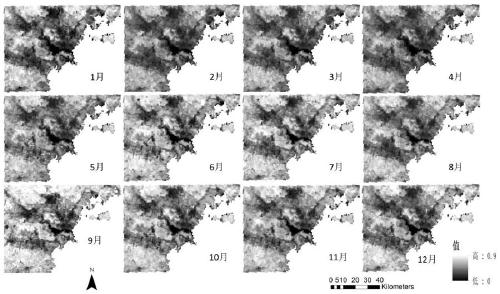Near-surface atmospheric fine particulate matter concentration estimation method based on space-time weighted regression model
An atmospheric fine particle and regression model technology, applied in CAD numerical modeling, design optimization/simulation, etc., can solve the problems of uneven distribution of sites and inability to accurately reflect the distribution of PM2.5 concentration
- Summary
- Abstract
- Description
- Claims
- Application Information
AI Technical Summary
Problems solved by technology
Method used
Image
Examples
Embodiment Construction
[0031] The following will clearly and completely describe the technical solutions in the embodiments of the present invention with reference to the accompanying drawings in the embodiments of the present invention. Obviously, the described embodiments are only some, not all, embodiments of the present invention. Based on the embodiments of the present invention, all other embodiments obtained by persons of ordinary skill in the art without making creative efforts belong to the protection scope of the present invention.
[0032] Please refer to Figure 1-5 , a method for estimating the concentration of fine particulate matter in the atmosphere near the surface based on the space-time weighted regression (STWR) model, including the following steps:
[0033] S1, obtain the PM of the ground monitoring site 2.5 monthly concentration data;
[0034]S2. Obtain MODIS / Terra 1km AOT data, and eliminate dimensions for the AOT data;
[0035] S3, get meteorological data and NDVI 5 data,...
PUM
 Login to View More
Login to View More Abstract
Description
Claims
Application Information
 Login to View More
Login to View More - R&D
- Intellectual Property
- Life Sciences
- Materials
- Tech Scout
- Unparalleled Data Quality
- Higher Quality Content
- 60% Fewer Hallucinations
Browse by: Latest US Patents, China's latest patents, Technical Efficacy Thesaurus, Application Domain, Technology Topic, Popular Technical Reports.
© 2025 PatSnap. All rights reserved.Legal|Privacy policy|Modern Slavery Act Transparency Statement|Sitemap|About US| Contact US: help@patsnap.com



